Exploring Iconic Landmarks of Germany
LEARN THE FUN AND EXCITING HISTORY OF GERMANY'S FAMOUS LANDMARKS
Located in the heart of Europe, Germany has a long and storied history. Marked by emperors, artists, philosophers, and powerful cultural shifts, Germany has helped to shape the world. And every year, people from around the world travel to Germany to experience the history and culture for themselves; some make the trip as a way to connect to their ancestral homeland and heritage, while others choose to explore the art and attractions on vacation or even gain German citizenship and make the nation their full-time home. Regardless of why you’re traveling to Germany, planning a travel itinerary that includes some of the most well-known landmarks is a must. The nation’s architectural and historical landmarks are enduring symbols of its past. From the solemn echoes of the Berlin Wall to the fairy-tale spires of a Bavarian castle, Germany offers a wide range of unique destinations across its 16 states that reflect the country’s past and present.
The Brandenburg Gate
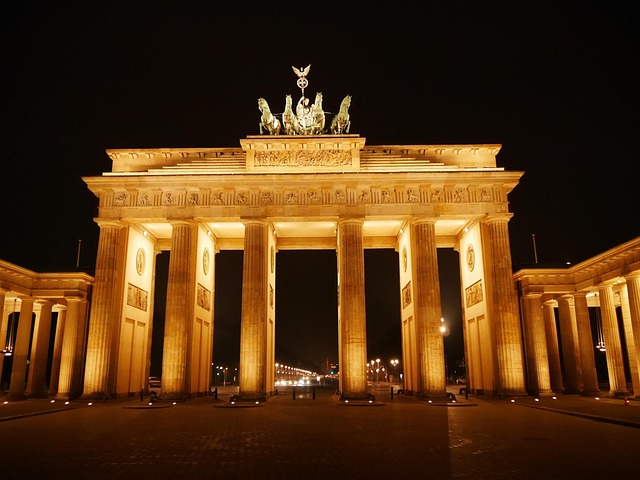
Built between 1788 and 1791 and standing at the western edge of Berlin’s city center, the Brandenburg Gate is one of Germany’s most recognizable landmarks. A symbol of peace, this neoclassical gate was commissioned by King Frederick William II of Prussia. Its design was inspired by the propylaea in Athens and features 12 Doric columns as wells as a striking sculpture at its apex of a quadriga, a once-common two-wheeled racing chariot drawn by four horses, driven by Victoria, the Roman goddess of victory.
The Brandenburg Gate has evolved over time from a royal entrance to a powerful political symbol. During the Cold War, the gate stood in the no-man’s-land between East Berlin and West Berlin, becoming a poignant emblem of division. Since the fall of the Berlin Wall in 1989, it has symbolized freedom and unity. Today, millions of visitors are drawn to the Brandenburg Gate each year, and it serves as the backdrop for major events and national celebrations.
Neuschwanstein Castle
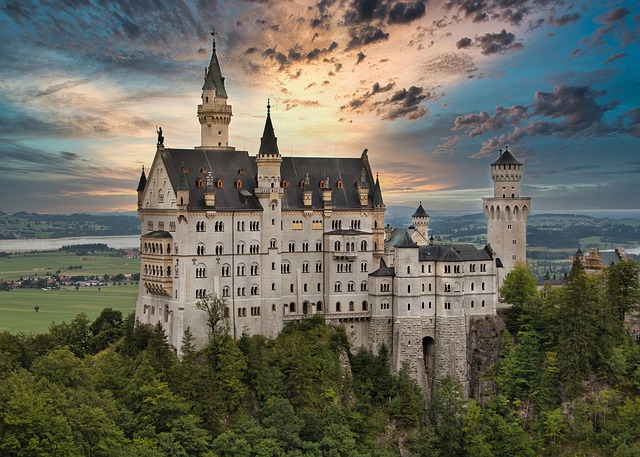
Nestled in the picturesque Allgäu region of the Bavarian Alps near the town of Füssen, Neuschwanstein Castle is straight from the pages of a storybook. Commissioned by King Ludwig II of Bavaria in 1868, the castle was intended as a personal retreat and a tribute to the operatic works of Richard Wagner. However, the king didn’t live long enough to see the project completed. Its dramatic towers, sweeping mountain views, and romantic architectural style have made it one of the most photographed buildings in the world. But don’t let its medieval appearance fool you into thinking it’s cold and damp inside the castle; Neuschwanstein was built with modern technology for its time, including running water and central heating. The interiors are breathtaking, adorned with painted murals, elaborate woodwork, and theatrical decor reflecting Wagnerian themes. Neuschwanstein’s enchanting aesthetic even inspired Walt Disney’s Sleeping Beauty Castle, solidifying its place in both history and pop culture. But as picturesque as Neuschwanstein Castle may be, the darker parts of its history cannot be ignored. During World War II, the beautiful fortress housed Adolf Hitler’s art-looting operation.
The East Side Gallery

The East Side Gallery is much more than a remnant of the Berlin Wall; it is the longest open-air art gallery in the world today. Stretching 1.3 kilometers, which is a little more than three-quarters of a mile, along the River Spree in Berlin, this preserved section of the wall has been transformed by more than 100 artists from around the world. Each individual mural reflects the themes of hope, freedom, and political change, capturing the emotions that surrounded the 1989 fall of the wall that had separated East and West German citizens for more than 25 years during the Cold War.
Notable works include Dmitri Vrubel’s My God, Help Me to Survive This Deadly Love, which depicts a famous kiss between Soviet leader Leonid Brezhnev and East German leader Erich Honecker. The gallery is an eclectic monument to peaceful revolution and free artistic expression. It stands as a historic memorial and a celebration of liberty, attracting millions of visitors annually.
The Berlin Cathedral
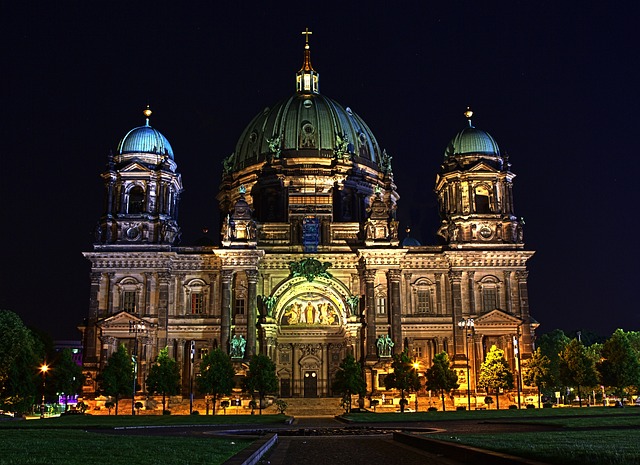
The Berlin Cathedral is home to the Evangelical Supreme Parish and Collegiate Church. It is easily recognized by its impressive central dome and ornate cupolas that dominate the skyline of Museum Island in central Berlin. Completed in 1905, the cathedral was constructed in the Baroque Revival style under the direction of Emperor Wilhelm II, and its facade features elaborate sculptures. Inside, you’ll find intricate mosaics, an ornate pulpit, and a grand Sauer organ. Today, it serves the public as the largest Protestant church in Germany, regularly hosting religious services, baptisms, weddings, and special events. In addition to its religious significance and architectural grandeur, the cathedral is also known for being the home of the Hohenzollern crypt, the final resting place of many members of the Prussian royal family. Visitors can also climb to the dome’s observation deck for dramatic panoramic views of Berlin.
- Berlin Cathedral
- The Design, Construction, and Preservation of the Berlin Cathedral
- German Citizenship by Descent
Nymphenburg Palace
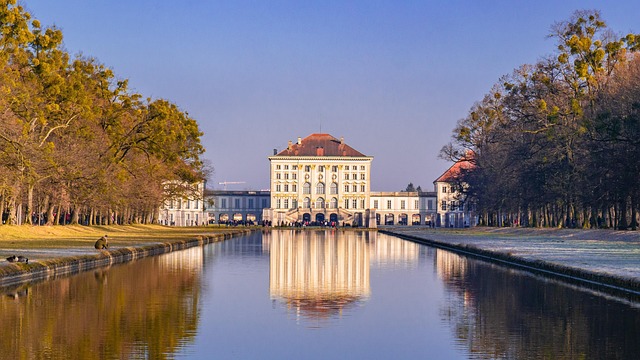
Located in Munich, Germany, Nymphenburg Palace was the summer residence of Bavarian monarchs and exemplifies Baroque architectural elegance. Construction began in 1664, commissioned by Elector Ferdinand Maria and his wife Henriette Adelaide of Savoy to celebrate the birth of their heir, Max Emanuel. The palace opened in 1675 and has since been expanded into a vast complex, including features like formal gardens, pavilions, and canals. Highlights of the Nymphenburg Palace complex include the grand Stone Hall with its breathtaking ceiling frescoes, the rococo Amalienburg hunting lodge, and the Gallery of Beauties, a portrait collection commissioned by King Ludwig I. Visitors can also explore the Marstallmuseum, which houses royal coaches and carriages. The palace grounds offer a serene escape and a glimpse into what Bavaria’s regal past looked like in the 17th century.
Saxon Switzerland National Park
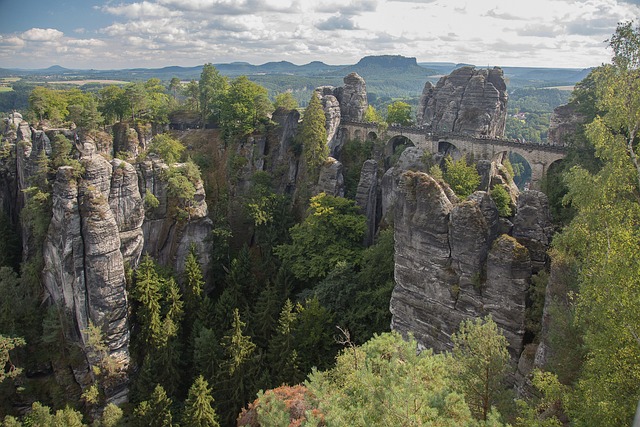
For travelers who are most interested in Germany’s natural beauty, Saxon Switzerland National Park offers a counterpoint to Germany’s urban wonders. Located southeast of Dresden near the Czech border, this park is known for its impressive sandstone formations, its deep gorges, and dense forests that run alongside the Elbe River. Its most iconic feature is the Bastei Bridge, which spans towering rock pinnacles and provides panoramic views over the Elbe Valley. The park is a paradise for hikers, climbers, and nature-lovers with more than 400 kilometers of marked trails and climbing routes.
Germany’s many landmarks tell the story of a nation shaped by artistic brilliance, royal ambition, revolutionary change, and awe-inspiring natural wonders. Each site offers visitors a unique experience and a deeper understanding of the German identity. With its blend of history, culture, and beauty, Germany is an exceptional travel destination that promises unforgettable memories for all who visit or choose to call the country home.
This page was last updated with help by Marco Permunian


